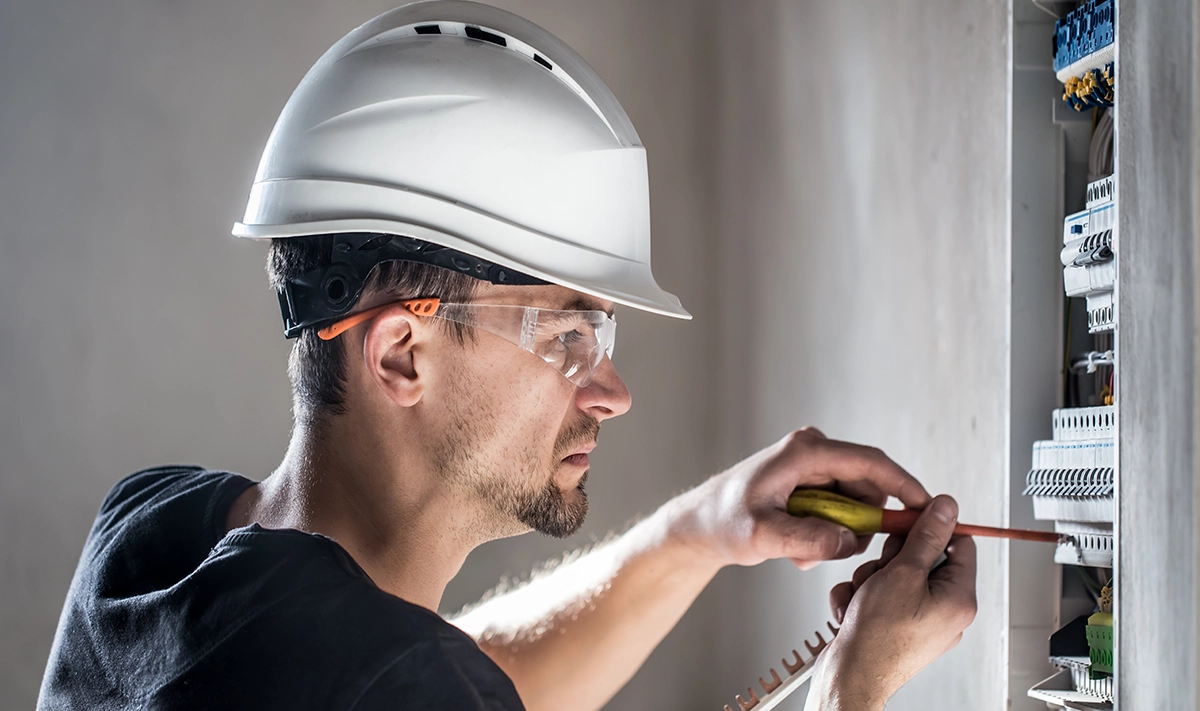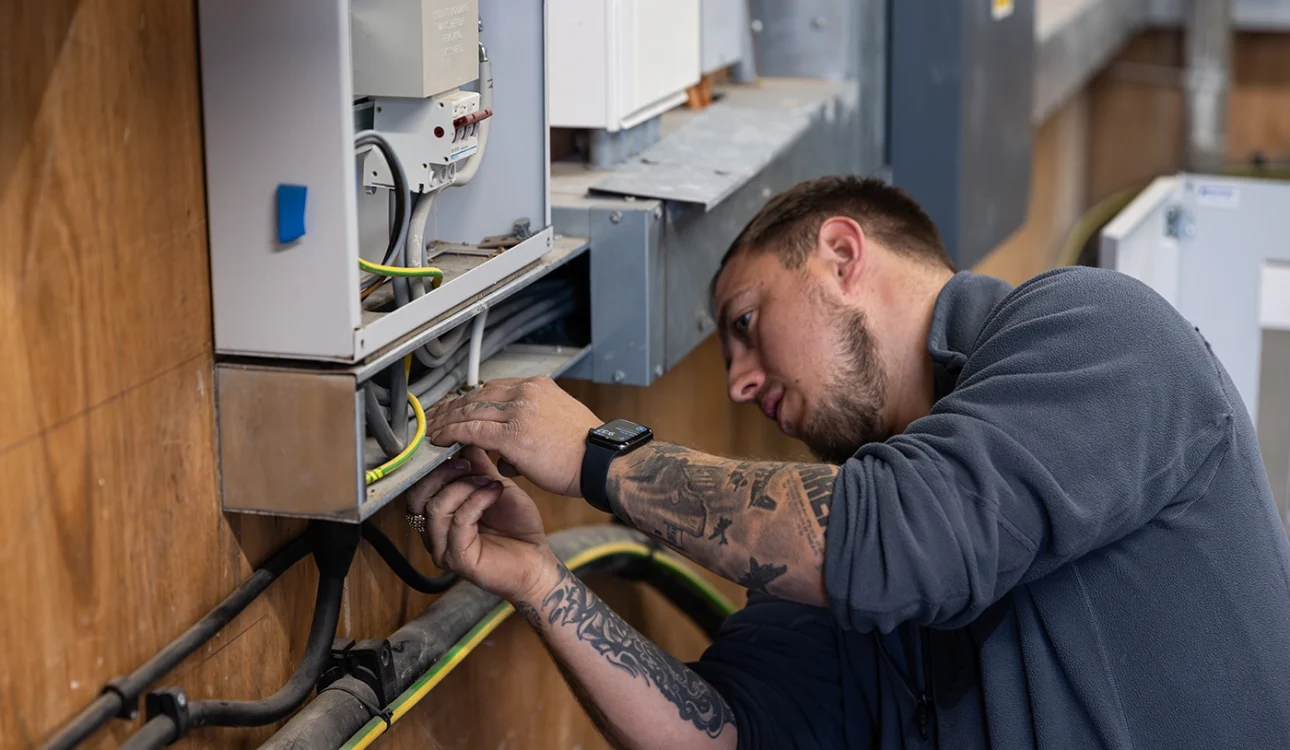EICR Regulations for Landlords: What You Need to Know in 2025
Electrical safety in rental properties isn’t just good practice—it’s a legal requirement. An Electrical Installation Condition Report (EICR) is a mandatory certificate that confirms your rental property’s electrical systems meet current safety standards. As we move through 2025, landlords across England must stay informed about EICR Regulations 2025 and ensure full compliance to protect tenants and avoid substantial penalties. This comprehensive guide covers everything landlords need to know about the Landlord Electrical Safety Certificate, from legal obligations to inspection procedures, with a special focus on requirements for properties in London and the M25 area.
Understanding EICR Regulations for Landlords
The Electrical Installation Condition Report serves as a critical safety document that assesses the condition of electrical installations within a property. Introduced under The Electrical Safety Standards in the Private Rented Sector (England) Regulations 2020, the EICR requirement became mandatory for all private landlords letting residential properties in England.
The EICR certificate for landlords must be carried out by a qualified and competent person, typically a registered electrician with appropriate certification from recognized bodies such as NICEIC, NAPIT, or ELECSA. These professionals conduct thorough inspections of your property’s electrical systems, identifying any defects, deterioration, or conditions that could pose safety risks to occupants.
Under current EICR requirements for rental properties, landlords must obtain an electrical safety inspection at least every five years. However, the inspection may be needed sooner if the previous report recommends it or if significant electrical work has been completed. The certificate must be provided to existing tenants within 28 days of the inspection and to new tenants before they occupy the property. Additionally, landlords must supply a copy to their local authority upon request, ensuring transparency and accountability in the private rented sector.
The regulations apply to assured shorthold tenancies, licenses to occupy, and certain houses in multiple occupation (HMOs). Whether you manage a single buy-to-let property or an extensive portfolio across London, compliance with electrical safety standards for landlords is non-negotiable.
What’s Changing in 2025—Key EICR Regulation Updates
While the fundamental framework established in 2020 remains in place, the EICR law 2025 update brings increased enforcement and stricter compliance monitoring. Local authorities across England have intensified their approach to landlord safety compliance, with more frequent inspections and higher penalties for non-compliance.
One significant development in 2025 is the enhanced digital record-keeping requirement. Landlords are now expected to maintain comprehensive digital records of all electrical inspections, remedial works, and certificates. This digital-first approach aligns with broader government initiatives to modernize the private rented sector and makes it easier for authorities to verify compliance during spot checks or tenant complaints investigations.
Enforcement has become notably more rigorous. Local councils are conducting targeted compliance campaigns, particularly in areas with high concentrations of rental properties such as London and other major cities. Penalties for failing to comply with EICR regulations have increased, with fines reaching up to £30,000 for serious or repeated offenses. Some councils have implemented proactive inspection programs, randomly selecting rental properties to audit for safety certificate compliance.
Another emerging focus in 2025 is the intersection between electrical safety and energy efficiency. While these remain separate regulatory frameworks, there’s growing emphasis on ensuring that electrical installations support energy-efficient technologies. Landlords making electrical upgrades are encouraged to consider future-proofing for EV charging points and renewable energy systems, though this isn’t yet mandatory for basic EICR compliance.
The renewal frequency reminder system has also been strengthened. Many local authorities now operate automated tracking systems that flag properties approaching their five-year EICR renewal date, proactively contacting landlords to ensure continuous compliance. This shift from reactive to proactive enforcement means landlords can no longer rely on flying under the radar.
Landlord Responsibilities Under the EICR Law
Understanding your obligations as a landlord is essential for maintaining compliance and ensuring tenant safety. The EICR legal requirements UK place several specific duties on property owners in the private rented sector.
First and foremost, landlords must schedule regular electrical inspections every five years, or more frequently if recommended by the qualified electrician conducting the assessment. The inspection must be carried out before a new tenancy begins, or within the existing five-year cycle for continuing tenancies. It’s your responsibility to engage a competent, registered electrician—cutting corners by hiring unqualified individuals invalidates the certificate and leaves you non-compliant.
When the inspection identifies faults, landlords must act swiftly on remedial work. Faults are categorized using standard codes: C1 (danger present, immediate action required), C2 (potentially dangerous, urgent remediation needed), and C3 (improvement recommended but not urgent). Properties cannot be let with outstanding C1 or C2 faults. Landlords must complete all necessary remedial work within 28 days of the inspection or the timeframe specified by the electrician, whichever is shorter. Once repairs are completed, a new EICR or follow-up inspection certificate must be obtained to verify the work meets safety standards.
Record-keeping represents another crucial responsibility. Landlords must maintain copies of all EICRs and provide them to tenants, prospective tenants, and local authorities upon request. The certificate must be supplied to existing tenants within 28 days of completion and to new tenants before the tenancy commences. Failure to provide documentation when requested by the local authority can result in immediate penalties.
Landlords should also understand that electrical safety standards for landlords extend beyond the five-yearly inspection. You’re responsible for ensuring that all electrical installations remain safe between inspections. This means addressing tenant reports of electrical problems promptly and conducting additional inspections if significant concerns arise, even if the five-year period hasn’t elapsed.
Insurance implications should not be overlooked. Many landlord insurance policies now require valid EICRs as a condition of coverage. Operating without a current certificate could void your insurance, leaving you personally liable for any electrical incidents.
What an EICR Inspection Covers
Understanding what happens during an electrical inspection report for landlords helps you prepare your property and appreciate the thoroughness of the process. A comprehensive EICR examination involves several distinct stages designed to assess every aspect of your property’s electrical installations.
The inspection begins with a visual examination of all accessible electrical equipment, wiring, consumer units (fuse boxes), sockets, switches, and fixed appliances. The electrician looks for signs of damage, wear, overheating, or improper modifications. They’ll check whether installations comply with current wiring regulations (BS 7671) and identify any outdated or dangerous practices.
Following the visual check, the electrician conducts live electrical testing using specialized equipment. This phase measures earth continuity, insulation resistance, polarity, and earth fault loop impedance. These tests ensure that protective devices like RCDs (Residual Current Devices) and MCBs (Miniature Circuit Breakers) function correctly and will operate in fault conditions to prevent electric shock or fire.
Circuit analysis forms the third critical component. The electrician examines the distribution of circuits throughout the property, verifying that circuits aren’t overloaded and that cable sizes are appropriate for the current they carry. They’ll test individual circuits systematically, documenting their findings for each.
After completing the inspection and testing phases, the electrician generates the formal EICR report. This document details their findings using standardized observation codes. C1 codes indicate danger is present, requiring immediate action before the property can be occupied. C2 codes flag potentially dangerous conditions requiring urgent remediation. C3 codes suggest improvements that would enhance safety, though they’re not immediately critical. FI (Further Investigation) codes indicate areas where the inspector couldn’t fully assess the installation and additional work is needed to reach a conclusion.
The report also includes an overall assessment determining whether the electrical installation is satisfactory for continued use. Only a satisfactory rating without outstanding C1 or C2 faults constitutes a valid EICR certificate for landlords allowing you to legally let the property.
For a deeper understanding of interpreting your EICR results, refer to our detailed guide: “How to Read an EICR Report: Understanding Codes and Results.”
How to Stay Compliant and Avoid Fines
Maintaining continuous compliance with new EICR rules for landlords requires proactive management and attention to detail. Here’s how to ensure you meet all regulatory requirements and protect yourself from penalties.
Implement a robust calendar system tracking your EICR renewal requirements 2025 for each property in your portfolio. Set reminders six months before expiration to allow ample time for scheduling inspections and completing any necessary remedial work. Don’t wait until the last minute—electricians often experience high demand, particularly during peak letting seasons.
Always engage qualified, registered electricians for your electrical testing for landlords. Verify their credentials before hiring, confirming membership with recognized certification bodies. Request evidence of their qualifications and professional indemnity insurance. Using unqualified individuals invalidates your certificate and leaves you exposed to both legal action and potential liability in case of electrical incidents.
Maintain meticulous records of all electrical work, inspections, and certificates. Create both digital and physical copies, storing them securely but accessibly. When you obtain an EICR Certificate London or elsewhere, ensure copies are distributed to all required parties promptly. Develop a standardized filing system for all safety certificates across your properties, making it easy to locate documentation when needed.
When properties require remedial work, obtain detailed quotes from qualified electricians and schedule repairs immediately. Don’t delay addressing C1 or C2 faults—these represent serious safety risks and legal violations. Once work is completed, arrange for verification and obtain updated certification confirming all issues have been resolved.
Consider partnering with a comprehensive compliance provider offering EICR Testing Services London and throughout the M25 area. Specialist companies streamline the process, managing scheduling, coordinating inspections, tracking certificate expiration dates, and ensuring you never miss a renewal deadline. This proves particularly valuable for landlords managing multiple properties or those new to letting.
Budget appropriately for electrical safety compliance. Factor in the cost of five-yearly inspections and potential remedial work when calculating your rental property’s operating expenses. Proactive maintenance often proves less expensive than emergency repairs, and the peace of mind knowing your properties are safe and compliant is invaluable.
Book your EICR Certificate with Landlord Certification today to ensure seamless compliance across your rental portfolio.
Linking EICR Compliance with Other Landlord Certificates
Electrical safety represents just one component of comprehensive landlord compliance. Understanding how the rental property electrical certificate fits within your broader safety obligations helps you maintain a fully compliant and safe property portfolio.
Gas Safety Certificates remain mandatory for properties with gas appliances, requiring annual inspections by Gas Safe registered engineers. Unlike the five-year EICR cycle, gas safety checks must be conducted yearly, making them the most frequent safety obligation for landlords with gas heating or cooking equipment.
Energy Performance Certificates (EPCs) assess your property’s energy efficiency and must be valid when marketing rental properties. While EPCs don’t directly relate to safety, they’re legally required and increasingly important as minimum energy efficiency standards tighten. Current regulations prohibit letting properties with EPC ratings below E, with future improvements expected to raise this threshold.
Fire Safety Certificates and risk assessments are essential, particularly for HMOs and buildings with shared facilities. Landlords must ensure adequate fire detection, emergency lighting, fire doors, and evacuation procedures. The fire safety regime operates separately from EICR requirements but complements them in creating comprehensive property safety.
Smoke and carbon monoxide detectors must be installed and maintained according to specific regulations. While often verified during EICR inspections, these devices require regular testing and battery replacement between formal inspections.
Managing multiple compliance requirements can feel overwhelming, but partnering with a specialist provider simplifies the process. Landlord Certification offers complete compliance solutions for London landlords, coordinating all your safety certificates, tracking renewal dates, and ensuring you meet every legal obligation. From your EICR Certificate London through to Fire Safety Certificate London, we manage the entire compliance journey, allowing you to focus on property management and tenant relationships.
Maintaining comprehensive records across all safety certificates also strengthens your position should disputes arise or if local authorities conduct inspections. Demonstrating proactive compliance across all regulatory areas shows professional property management and commitment to tenant welfare.
Conclusion & Call to Action
Navigating EICR Regulations 2025 requires vigilance, professional expertise, and commitment to tenant safety. The Electrical Safety Standards in the Private Rented Sector (England) Regulations 2020 established clear obligations for landlords, and enforcement has only strengthened as we progress through 2025. Understanding what landlords need to know about EICR in 2025—from five-yearly inspection requirements to immediate action on C1 and C2 faults—protects both your tenants and your investment.
The landscape of landlord compliance continues to evolve, with digital record-keeping, enhanced enforcement, and increased penalties for non-compliance. Staying ahead of these changes means partnering with qualified professionals who understand the intricacies of electrical safety certificate compliance and can guide you through every requirement.
Don’t leave your compliance to chance or risk substantial fines for oversights. Whether you manage properties across London, throughout the M25 area, or elsewhere in England, professional EICR inspection ensures your electrical installations meet current standards and your properties remain safe for occupancy.
Contact Landlord Certification today to schedule your EICR inspection and ensure your property meets all 2025 electrical safety regulations. Our team of qualified electricians and compliance specialists provides comprehensive EICR services, remedial work coordination, and ongoing support to keep your rental portfolio fully compliant. Protect your tenants, safeguard your investment, and achieve peace of mind knowing your properties meet the highest electrical safety standards.





